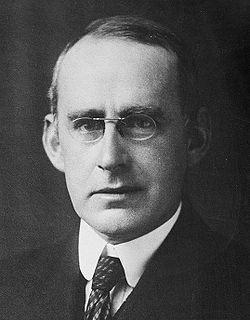Related Research Articles

In physical cosmology, cosmic inflation, cosmological inflation, or just inflation, is a theory of exponential expansion of space in the early universe. The inflationary epoch lasted from 10−36 seconds after the conjectured Big Bang singularity to some time between 10−33 and 10−32 seconds after the singularity. Following the inflationary period, the universe continued to expand, but at a slower rate. The acceleration of this expansion due to dark energy began after the universe was already over 7.7 billion years old.

Entropy is a scientific concept as well as a measurable physical property that is most commonly associated with a state of disorder, randomness, or uncertainty. The term and the concept are used in diverse fields, from classical thermodynamics, where it was first recognized, to the microscopic description of nature in statistical physics, and to the principles of information theory. It has found far-ranging applications in chemistry and physics, in biological systems and their relation to life, in cosmology, economics, sociology, weather science, climate change, and information systems including the transmission of information in telecommunication.

A Brief History of Time: From the Big Bang to Black Holes is a book on theoretical cosmology by English physicist Stephen Hawking. It was first published in 1988. Hawking wrote the book for readers who had no prior knowledge of physics.

The second law of thermodynamics is a physical law of thermodynamics about heat and loss in its conversion. It can be stated in various ways, the simplest being:
Not all heat energy can be converted into work in a cyclic process.

T-symmetry or time reversal symmetry is the theoretical symmetry of physical laws under the transformation of time reversal,

The ultimate fate of the universe is a topic in physical cosmology, whose theoretical restrictions allow possible scenarios for the evolution and ultimate fate of the universe to be described and evaluated. Based on available observational evidence, deciding the fate and evolution of the universe has become a valid cosmological question, being beyond the mostly untestable constraints of mythological or theological beliefs. Several possible futures have been predicted by different scientific hypotheses, including that the universe might have existed for a finite and infinite duration, or towards explaining the manner and circumstances of its beginning.

In physical cosmology, the Big Rip is a hypothetical cosmological model concerning the ultimate fate of the universe, in which the matter of the universe, from stars and galaxies to atoms and subatomic particles, and even spacetime itself, is progressively torn apart by the expansion of the universe at a certain time in the future, until distances between particles will become infinite. According to the standard model of cosmology, the scale factor of the universe is accelerating, and, in the future era of cosmological constant dominance, will increase exponentially. However, this expansion is similar for every moment of time, and is characterized by an unchanging, small Hubble constant, effectively ignored by any bound material structures. By contrast, in the Big Rip scenario the Hubble constant increases to infinity in a finite time.

The Big Crunch is a hypothetical scenario for the ultimate fate of the universe, in which the expansion of the universe eventually reverses and the universe recollapses, ultimately causing the cosmic scale factor to reach zero, an event potentially followed by a reformation of the universe starting with another Big Bang. The vast majority of evidence indicates that this hypothesis is not correct. Instead, astronomical observations show that the expansion of the universe is accelerating, rather than being slowed by gravity, suggesting that the universe is far more likely to end in heat death.

The arrow of time, also called time's arrow, is the concept positing the "one-way direction" or "asymmetry" of time. It was developed in 1927 by the British astrophysicist Arthur Eddington, and is an unsolved general physics question. This direction, according to Eddington, could be determined by studying the organization of atoms, molecules, and bodies, and might be drawn upon a four-dimensional relativistic map of the world.

The heat death of the universe is a hypothesis on the ultimate fate of the universe, which suggests the universe will evolve to a state of no thermodynamic free energy and will, therefore, be unable to sustain processes that increase entropy. Heat death does not imply any particular absolute temperature; it only requires that temperature differences or other processes may no longer be exploited to perform work. In the language of physics, this is when the universe reaches thermodynamic equilibrium.

The Big Bounce is a hypothesized cosmological model for the origin of the known universe. It was originally suggested as a phase of the cyclic model or oscillatory universe interpretation of the Big Bang, where the first cosmological event was the result of the collapse of a previous universe. It receded from serious consideration in the early 1980s after inflation theory emerged as a solution to the horizon problem, which had arisen from advances in observations revealing the large-scale structure of the universe. In the early 2000s, inflation was found by some theorists to be problematic and unfalsifiable in that its various parameters could be adjusted to fit any observations, so that the properties of the observable universe are a matter of chance. Alternative pictures including a Big Bounce may provide a predictive and falsifiable possible solution to the horizon problem, and are under active investigation as of 2017.

A cyclic model is any of several cosmological models in which the universe follows infinite, or indefinite, self-sustaining cycles. For example, the oscillating universe theory briefly considered by Albert Einstein in 1930 theorized a universe following an eternal series of oscillations, each beginning with a Big Bang and ending with a Big Crunch; in the interim, the universe would expand for a period of time before the gravitational attraction of matter causes it to collapse back in and undergo a bounce.
Loschmidt's paradox, also known as the reversibility paradox, irreversibility paradox or Umkehreinwand, is the objection that it should not be possible to deduce an irreversible process from time-symmetric dynamics. This puts the time reversal symmetry of (almost) all known low-level fundamental physical processes at odds with any attempt to infer from them the second law of thermodynamics which describes the behaviour of macroscopic systems. Both of these are well-accepted principles in physics, with sound observational and theoretical support, yet they seem to be in conflict, hence the paradox.
Formulated in February 1862 by Lord Kelvin and expanded by Hermann von Helmholtz and William John Macquorn Rankine, the heat death paradox, also known as thermodynamic paradox, Clausius' paradox and Kelvin’s paradox, is a reductio ad absurdum argument that uses thermodynamics to show the impossibility of an infinitely old universe.

A physical paradox is an apparent contradiction in physical descriptions of the universe. While many physical paradoxes have accepted resolutions, others defy resolution and may indicate flaws in theory. In physics as in all of science, contradictions and paradoxes are generally assumed to be artifacts of error and incompleteness because reality is assumed to be completely consistent, although this is itself a philosophical assumption. When, as in fields such as quantum physics and relativity theory, existing assumptions about reality have been shown to break down, this has usually been dealt with by changing our understanding of reality to a new one which remains self-consistent in the presence of the new evidence.

In physical cosmology, the baryon asymmetry problem, also known as the matter asymmetry problem or the matter–antimatter asymmetry problem, is the observed imbalance in baryonic matter and antibaryonic matter in the observable universe. Neither the standard model of particle physics, nor the theory of general relativity provides a known explanation for why this should be so, and it is a natural assumption that the universe is neutral with all conserved charges. The Big Bang should have produced equal amounts of matter and antimatter. Since this does not seem to have been the case, it is likely some physical laws must have acted differently or did not exist for matter and antimatter. Several competing hypotheses exist to explain the imbalance of matter and antimatter that resulted in baryogenesis. However, there is as of yet no consensus theory to explain the phenomenon, which has been described as "one of the great mysteries in physics".
Entropy is one of the few quantities in the physical sciences that require a particular direction for time, sometimes called an arrow of time. As one goes "forward" in time, the second law of thermodynamics says, the entropy of an isolated system can increase, but not decrease. Thus, entropy measurement is a way of distinguishing the past from the future. In thermodynamic systems that are not isolated, entropy can decrease with time, for example living systems where local entropy is reduced at the expense of an environmental increase, the formation of typical crystals, the workings of a refrigerator and within living organisms.

Most observations suggest that the expansion of the universe will continue forever. The prevailing theory is that the universe will cool as it expands, eventually becoming too cold to sustain life. For this reason, this future scenario once popularly called "Heat Death" is now known as the "Big Chill" or "Big Freeze".

Time in physics is defined by its measurement: time is what a clock reads. In classical, non-relativistic physics, it is a scalar quantity and, like length, mass, and charge, is usually described as a fundamental quantity. Time can be combined mathematically with other physical quantities to derive other concepts such as motion, kinetic energy and time-dependent fields. Timekeeping is a complex of technological and scientific issues, and part of the foundation of recordkeeping.
Time's Arrow and Archimedes Point: New Directions for the Physics of Time is a 1996 book by Huw Price, on the physics and philosophy of the Arrow of Time. It explores the problem of the direction of time, looking at issues in thermodynamics, cosmology, electromagnetism, and quantum mechanics. Price argues that it is fruitful to think about time from a hypothetical Archimedean Point - a viewpoint outside of time. In later chapters, Price argues that retrocausality can resolve many of the philosophical issues facing quantum mechanics and along these lines proposes an interpretation involving what he calls 'advanced action'.
References
- ↑ Time's arrow & Archimedes' point: new directions for the physics of time, Huw Price, Oxford University Press US, 1997, ISBN 978-0-19-511798-1, pp. 81–82.
- ↑ Gold, T. (1962). "The Arrow of Time". American Journal of Physics. American Association of Physics Teachers (AAPT). 30 (6): 403–410. doi:10.1119/1.1942052. ISSN 0002-9505.
- ↑ Time and Space, Barry Dainton, Acumen Publishing Limited, 2010, ISBN 978-1-84465-191-7